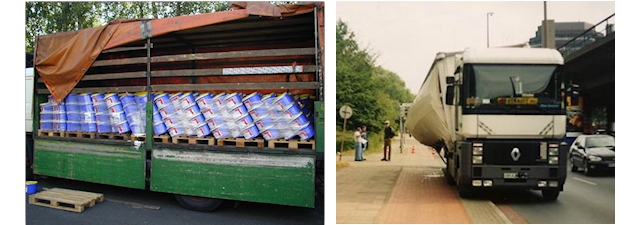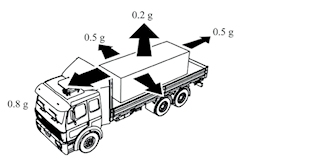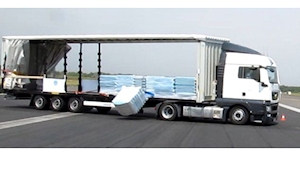Cargo transported over the road endures all the dynamic and environmental conditions that we talk about frequently--vibration, shock, temperature, relative humidity.
For safety reasons, it is also important to consider how lateral accelerations (or decelerations) will affect the cargo. The three dynamic events that are most likely to affect the load's stability are deceleration during braking, lateral acceleration when going around curves, and acceleration in the rearward direction, such as when a vehicle is backing up and makes contact with a loading dock.
If cargo shifts or falls off the truck during any of these types of events, it can cause a dangerous situation.

International (ISO, European, North America) regulatory bodies address rules for load securement. In the United States, the Federal Motor Carrier Safety Administration (FMCSA) publishes cargo securement rules that motor carriers must comply with to prevent cargo from shifting or falling during transport. Simply put, these rules are in place to reduce the number of accidents caused by loads that become unstable on commercial motor vehicles rolling down the interstate.
Once a load is secured for transport, it must be stable enough to withstand these acceleration/deceleration levels (applied separately):
PERFORMANCE CRITERIA:

- 0.8 g deceleration in the forward direction
- 0.5 g acceleration in the rearward direction
- 0.5 g acceleration in the lateral direction

These performance levels were selected by the FMCSA after their researchers reviewed real world data. They found that the deceleration during braking ranges from around 0.6 g's for a loaded truck in good conditions up to around 0.85 g's for an empty or lightly loaded vehicle. When driving around a curve, lateral accelerations can be quite low (0.05 - 0.17 g) if the vehicle is driving the posted advisory speed. At higher speeds, the lateral acceleration can be as high as 0.5 g for a lightly loaded vehicle or a loaded vehicle with a low center of gravity.